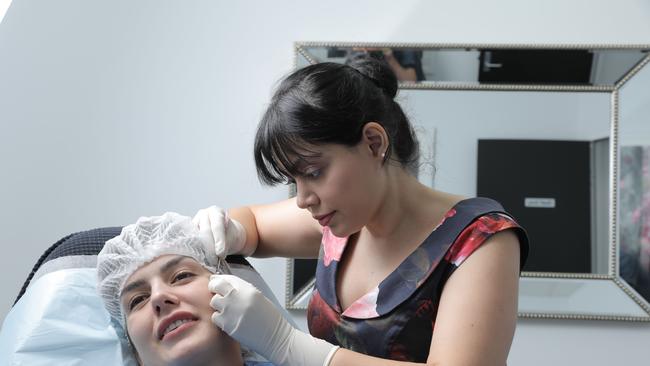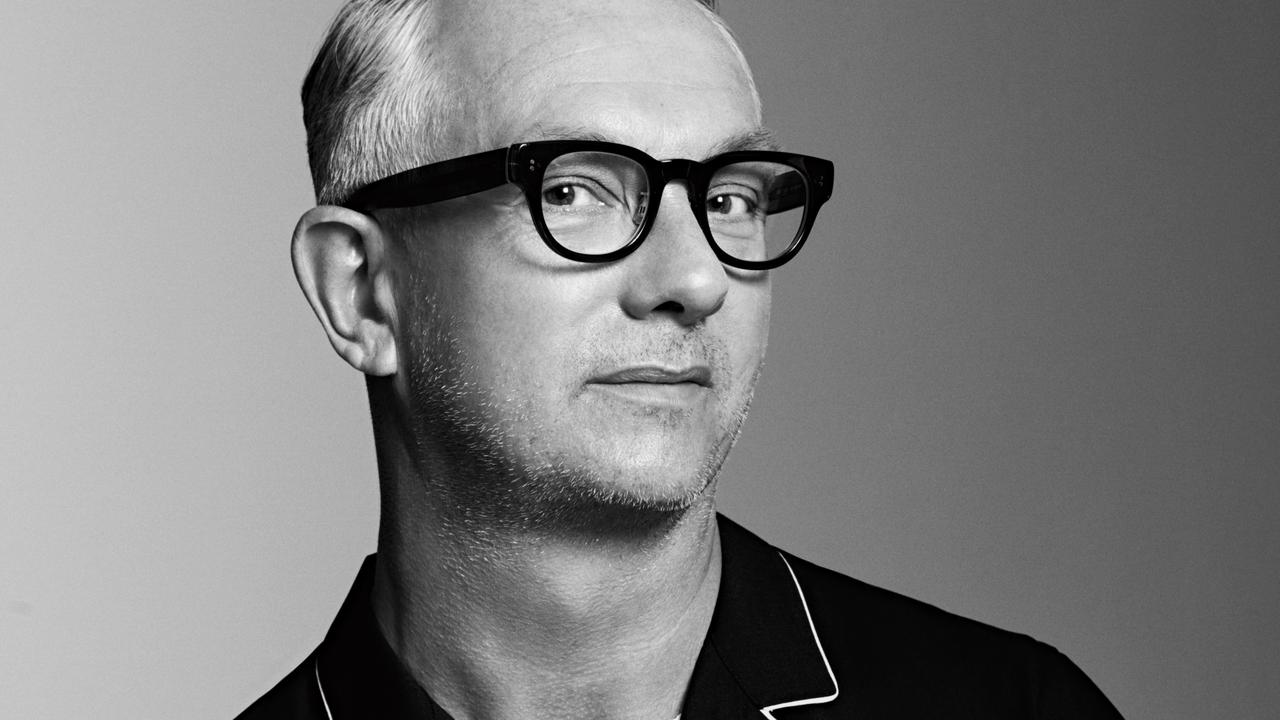The facelift is back, but not as we know it
What’s driving its return, and why it looks different this time around.

After months of playing calendar Tetris, my girlfriend and I finally managed to nail down lunch together. Since becoming a senior consultant for a global firm, her non-stop travel schedule had made catching up nearly impossible and before our reunion, I’d chalked up her glowing Instagram pictures to some clever filters or editing. But the Instagram-filter theory was squashed the moment I saw her. She looked as though she’d aged a decade – in reverse. Her 41-year-old brows lifted with just enough ease to rule out heavy reliance on muscle relaxants, and even the most skilled injector couldn’t achieve her taut, natural-looking features with filler or laser alone. Whatever her secret was, it was subtle, seamless and maddeningly effective.
I couldn’t help myself. I asked her outright why she didn’t look tired and perimenopausal like the rest of us. The collagen in my own face – and those of our millennial peers – had begun retreating with alarming speed. But not hers, apparently. “I had a facelift,” she shrugged casually.
I was floored. While the taboo around injectables has significantly waned in recent years, the stigma surrounding facelifts – particularly for anyone too young to claim seniors’ benefits – has been slower to fade.

But it’s starting to shift, and Gen X is leading the charge. A survey by the Australasian College of Cosmetic Surgery and Medicine revealed this group, now in their mid-forties and fifties, undergoes more facelifts (the technical term is rhytidectomy) than any other age group. However, if trends continue, Millennials – the first generation to document their lives using heavily filtered grids – could soon overtake them.
Plastic surgeon Dr David Sharp says that while most of his facelift patients are in their fifties, his Brisbane clinic is seeing a steady rise in inquiries from women in their thirties and forties.
In the past, facelifts were often perceived as something reserved for aristocrats, or at least a much older, wealthier demographic, he says. But today, the profile of facelift patients has shifted.
Many patients seeking facelifts today are professionals looking to maintain a youthful appearance.
Women’s health advocate Shelly Horton agrees, noting how differently this generation views ageing compared with their mothers and grandmothers.
“I think the generation before us, by the time they were in their forties or fifties, started to feel invisible,” says Horton, 51.
“They kind of just faded into the background. But those old stereotypes just don’t apply anymore.”
Don’t miss your copy of the March issue of WISH magazine in The Australian available on Friday, March 7
“I started to get small jowls in my late thirties. Both of my parents have thin faces and had sagging skin along their jaws and necks by their early fifties, so I knew I was heading in the same direction ... People comment I look great, but they don’t guess it’s a facelift.’” - Michelle*, facelift patient
The most recent ABS census data reflects how the lifestyles of working-age women today differ dramatically from those of previous generations. Not only are they better educated and earning more than the generations before them, but they’re starting families and considering home ownership later, too. This shift has created greater discretionary spending power and a social re-evaluation of what it means to be middle-aged. “There are so many incredibly successful women now who are running businesses and are the face of their companies,” says Horton, whose perimenopause memoir, I’m Your Peri Godmother, is also set for release later this year.
Feeling good is just as much a priority for “Perennials”, who approach physical ageing as less inevitable decline and more as a process that can be slowed, and even optimised. As both the owner of a skin and cosmetic clinic and a longevity expert, Dr Adam Brown has seen this shift first hand.
“The Perennials embody a new perspective on ageing,” he says. “[They’re] far more likely to approach the ageing process holistically, moving beyond the traditional reactive approach to ageing of the past decade, which focused on treating the symptoms and issues of ageing as they arose and adopting a ‘patch and fill’ approach to beauty.”
The former GP, who recently launched The Longevity Medicine Institute – a clinic offering personalised treatment programs to treat and prevent age-related decline and illness – says skin ageing is not only a cosmetic issue; it is closely connected to overall health. Dr Brown says that prioritising the health of our body’s largest organ can promote both “a youthful appearance and the wellbeing of our internal organs as we navigate the ageing process”.
Social media and digital face-altering technologies have undoubtedly recalibrated how we perceive beauty – and more worryingly, how early we feel the pressure to preserve it. These forces, coupled with a cultural obsession with looking “naturally” youthful, are driving younger women to seek surgical solutions such as facelifts. But the modern facelift is a far cry from the overly tight, wind-tunnel look of decades past.
Iterations of facelift surgery have existed since the early 1900s, says Dr Sharp. But the procedure that became popularised as a facelift previously involved longer incisions and a more pulled-back appearance. Today’s surgical techniques instead lift the face’s underlying tissues in harmony with the overlying skin, aiming for more natural-looking results compared with those more severe past procedures.
And it’s this shift in focus towards “restoring” that is making facelifts not only more appealing but also much harder to detect.
Michelle*, 47, never expected to be considering a facelift in her forties. She was confident and content with her looks until perimenopause then had her feeling she had aged overnight.
“I started to get small jowls in my late thirties,” she recalls. “Both of my parents have thin faces and had sagging skin along their jaws and necks by their early fifties, so I knew I was heading in the same direction.” But it wasn’t until hormonal changes “supercharged the ageing process” that the business owner decided to undergo surgery.
Michelle opted for a facelift and necklift, paired with fat grafting to restore lost volume. The cost of the procedure was significant, with time off work to recover also needed.
Now, more than a year post-op, she describes the results as subtle. “People comment that I look great, but they don’t guess it’s a facelift. I feel like I look how I did in my early thirties – very different from how my parents looked at my age.”

Surgeons say there’s no “ideal age” for a facelift. Instead, suitability depends on individual factors such as genetics, lifestyle, stressors, common facial expressions, environment and significant weight fluctuations.
Patients typically range from people in their early forties seeking a mini facelift, which brings more definition along the jawline, through to women in their seventies having full deep-plane facelift surgery, which is the most common technique used by surgeons.
Good physical health is important, but Dr Sharp says patients must also be in the right mental space before undergoing surgery. He encourages younger women to take preventative steps to delay invasive procedures.
The four best ways to stave off the effects of ageing are maintaining healthy skin through quality active skincare and treatments, protecting your skin from sun damage, good nutrition and hydration and maintaining a stable, healthy weight.
Modern techniques and shifting social perceptions mean facelifts are once again part of a broader conversation about ageing.
This story is from the March issue of WISH.







To join the conversation, please log in. Don't have an account? Register
Join the conversation, you are commenting as Logout